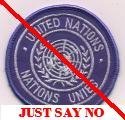Supply and Demand
With the recent spike in gas prices, the government has chosen not to pursue stupid policies of the past. As a result, we haven't seen shortages. We haven't seen long lines. We haven't seen gasoline station fights and riots. Why? Because price has been allowed to perform its valuable function -- that of equating demand with supply.
Our true supply problem is of our own doing. Large quantities of oil lie below the 20 million acre Arctic National Wildlife Refuge (ANWR). The amount of land proposed for oil drilling is less than 2,000 acres, less than one-half of one percent of ANWR. The U.S. Geological Survey estimates there are about 10 billion barrels of recoverable oil in ANWR. But environmentalists' hold on Congress has prevented us from drilling for it. They've also had success in restricting drilling in the Gulf of Mexico and off the shore of California. Another part of our energy problem has to do with refining capacity. Again, because of environmentalists' successful efforts, it's been 30 years since we've built a new oil refinery.
Few people realize that the U.S. is also a major oil-producing country. After Saudi Arabia, producing 10.4 million barrels a day, then Russia with 9.4 million barrels, the U.S. with 8.7 million barrels a day is the third-largest producer of oil. But we could produce more. Why aren't we? Producers have a variety of techniques to win monopoly power and higher profits that come with that power. What's a way for OPEC to gain more power? I have a hypothesis, for which I have no evidence, but it ought to be tested. If I were an OPEC big cheese, I'd easily conclude that I could restrict output and charge higher oil prices if somehow U.S. oil drilling were restricted. I'd see U.S. environmental groups as allies, and I would make "charitable" contributions to assist their efforts to reduce U.S. output. Again, I have no evidence, but it's a hypothesis worth examination."
Full article by Walter Williams, PHD Economist, here.



































0 Comments:
Post a Comment
<< Home